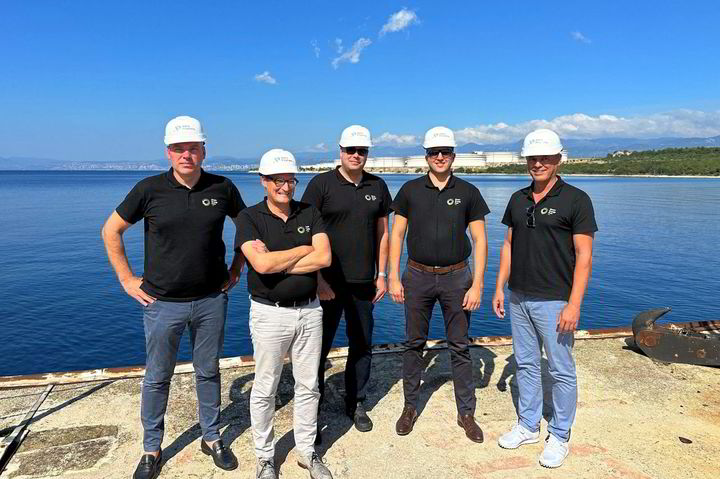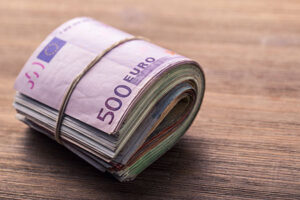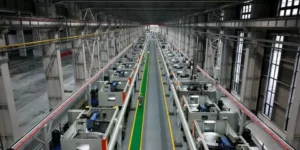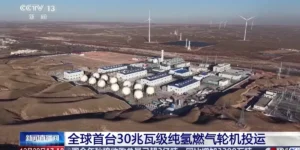EU pledges funding from €2bn pot for 10GW Brazilian green hydrogen project

an A 10GW green hydrogen and ammonia complex in Brazil is set to receive cash from the EU as well as its domestic government, European Commission president Ursula von der Leyen said in her address to the European Hydrogen Week in Brussels today (Monday).
“Together with President Lula of Brazil, we are announcing the European Union’s support to build one of the biggest hydrogen projects in the world, in the Brazilian state of Piauí,” she said, adding that this finance would be part of the €2bn ($2.2bn) in Global Gateway funding pledged specifically to Brazil earlier this year.
However she did not give any indication of how much cash the EU has earmarked for the project, and the CEO of developer Green Energy Park (GEP), Bart Biebuyck, told Hydrogen Insight that the exact amount is still subject to discussion.
GEP aims to export green ammonia produced in the northeastern state of Piauí to its own planned import terminal on the Adriatic island of Krk in Croatia, where it will be sold on to industrial offtakers in southeast Europe, including industrial areas in southern Germany and northern Italy.
Krk was also selected because the Croatian government is building a hydrogen-ready gas pipeline from the island, which currently hosts an LNG terminal, and also because no other companies are planning to ship green ammonia to that part of Europe.
The Brazilian project, Green Energy Park Piauí, which already has an environmental licence, will be built in six stages at an estimated cost of €13bn (not including the renewables component), with the first green hydrogen and ammonia produced in 2028, and the full 10GW completed in 2035.
Article continues below the advert
Biebuyck, who until May this year was executive director of the EU’s Clean Hydrogen Partnership, told Hydrogen Insight that the 10GW of electrolysers would be powered predominantly by solar power, backed by wind power and hydroelectricity from the Brazilian grid, although the exact mix has not yet been decided.
Indeed, an energy trader may be used to source the required green electricity at the lowest cost on a daily basis, he explained.
And because the Brazilian grid sources more than 90% of its electricity from green energy, predominantly hydropower, any green hydrogen or ammonia produced there would be exempt from EU rules on additionality and temporal and geographic correlation.
Some of the output might also be exported to the UK, the Middle East and/or Japan and South Korea, but discussions on such deliveries are ongoing, Biebuyck told Hydrogen Insight on the sidelines of a European Hydrogen Week side event, the Piauí-Europe Summit of Green Hydrogen.
He added that GEP was already in talks with potential offtakers, including those in the shipping industry.
“Piauí offers the best solar conditions in South America and very good wind conditions which makes our grid 100% green already,” Piauí state governor Rafael Fonteles told European Hydrogen Week.
He added that Piauí has the largest freshwater reserves in northeastern Brazil, avoiding the need to desalinate water.
“Water and green electricity are abundantly viable and the essential ingredients to produce green hydrogen and its derivatives in a very attractive and competitive manner,” Fonteles said.
“Having the energy the sun brings us and having the wind convenient with our hydropower capacity ensures that Piauí can provide a full year-round 24/7, 365 [days a year] green electricity supply in full compliance with the novel RED requirements,” he continued, referring to the Delegated Acts signed into law earlier this year.
Piauí officials believe that the state will be able to produce the cheapest green hydrogen and ammonia in the world.
Last month, GEP signed a preliminary offtake agreement with Slovenian wine producer Puklavec Family Wines to use hydrogen cracked back from imported ammonia in its winemaking process, albeit without disclosing an exact figure on how much H2 it planned to offtake and for which processes.
At the time of the announcement, GEP suggested that its first facility in Piauí would be 5GW, but this has now expanded to 10GW.
Brazil was one of the countries highlighted by Germany’s H2Global Foundation as offering a particularly low levelised cost of green hydrogen production by 2030 due to a combination of strong wind and solar resources.
The Port of Pecém in the state of Ceará, also in the northeast, is expected to be a major hydrogen hub, with mining giant Fortescue primed to invest $5bn in a 300,000-tonnes-per-year green H2 plant.
UPDATED to include further details from Green Energy Park and Piauí officials.



